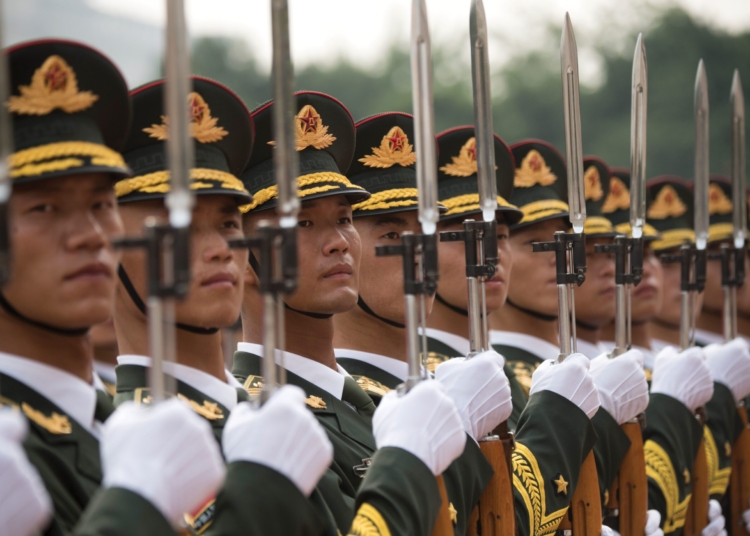Military parades and ceremonies are an essential part of armed forces’ traditions worldwide. These events showcase strength, discipline, and national pride, evolving from practical drills into elaborate spectacles. Throughout history, military parades have been used to demonstrate military might, intimidate adversaries, and celebrate victories. Today, they serve to honor military heroes, mark significant national events, and strengthen national unity. Iconic military parades include the Bastille Day Parade in France, Victory Day Parade in Russia, and Republic Day Parade in India. Military ceremonies, such as changing of the guard, flag-raising ceremonies, gun salutes, and ceremonial bands, further highlight a country’s military heritage and values. In conclusion, military parades and ceremonies symbolize not only military might but also national identity, patriotism, and the values upheld by military service.
Marching to the Beat: A Look into Military Parades and Ceremonies Around the World
Introduction
Military parades and ceremonies are deeply rooted in the traditions of armed forces around the world. They serve as a display of strength, discipline, and national pride. From their beginnings as practical drills to showcase military power, these events have evolved into elaborate spectacles that celebrate the prowess of countries’ armed forces. This article takes a closer look at military parades and ceremonies around the world.
The Origins of Military Parades
Military parades have been a part of human history for centuries. Ancient civilizations, such as the Egyptians and Romans, used military parades to demonstrate their military might and intimidate their adversaries. These early parades consisted of troops marching in formation, accompanied by music and other ceremonial elements.
Military Parades Today
In modern times, military parades have taken on a more ceremonial role. While they still serve to demonstrate the strength and capabilities of armed forces, they are also used to honor military heroes, mark significant national events or anniversaries, and strengthen national unity. Military parades are often held on important dates like national holidays, such as Independence Day or Victory Day.
Iconic Military Parades
1. Bastille Day Parade (France): The Bastille Day Parade on July 14th is one of the most renowned military parades in the world. It commemorates the French Revolution and showcases France’s military power. The parade takes place on the Champs-Élysées in Paris, with marching troops, armored vehicles, and a stunning display of air power.
2. Victory Day Parade (Russia): The Victory Day Parade held on May 9th in Moscow celebrates the Soviet Union’s victory over Nazi Germany in World War II. It showcases Russia’s military strength with a grand display of tanks, military aircraft, and soldiers marching in perfect sync. The parade concludes with a wreath-laying ceremony at the Tomb of the Unknown Soldier.
3. Republic Day Parade (India): The Republic Day Parade on January 26th is a grand spectacle held in New Delhi. It commemorates the date on which the Indian Constitution came into effect. The parade includes marching contingents from various branches of the Indian armed forces, cultural displays, and tableaus representing the country’s diverse states.
Ceremonial Traditions
Military ceremonies go beyond just parades. They encompass a wide range of ceremonial traditions that reflect a country’s military heritage and values. These ceremonies often involve the changing of the guard, flag-raising ceremonies, gun salutes, and ceremonial bands.
Changing of the Guard
One of the most recognizable military ceremonies is the changing of the guard. This tradition involves the ceremonial replacement of the soldiers responsible for guarding important landmarks or governmental buildings. Famous examples include the Changing of the Guard at Buckingham Palace in London or the Tomb of the Unknown Soldier in Arlington National Cemetery, Washington D.C.
Flag-raising Ceremonies
Flag-raising ceremonies are another significant military tradition. They symbolize the sovereignty and pride of a nation. These ceremonies typically involve the hoisting of the national flag, accompanied by national anthems or military music. They are often held at the start of major sporting events, state visits, or on national holidays.
Gun Salutes
Gun salutes have been a tradition in military ceremonies for centuries. They involve firing artillery pieces or cannons as a sign of respect or celebration. Salutes can vary in the number of shots fired, depending on the occasion. For example, a 21-gun salute is typically used to honor heads of state, while a 17-gun salute may commemorate the birth of a royal baby.
Ceremonial Bands
Ceremonial bands play an important role in military ceremonies. They provide the accompanying music during parades, changing of the guard ceremonies, and other military events. These bands often consist of brass and percussion instruments and wear distinctive uniforms. Their music evokes a sense of tradition, honor, and patriotism.
Conclusion
Military parades and ceremonies represent not only a display of military strength but also a celebration of national identity and heritage. They provide an opportunity for countries to demonstrate their patriotism and pay homage to the sacrifices made by their armed forces. From the grandiose displays of tanks and aircraft to the solemn traditions of changing the guard, these events serve as a reminder of the importance of military service and the values it upholds.













